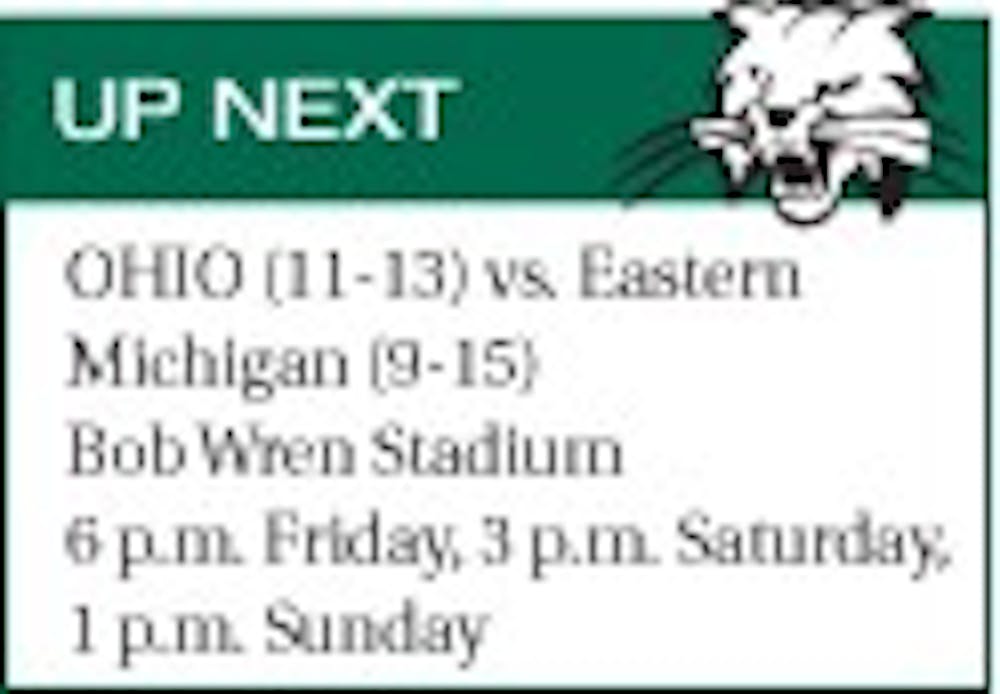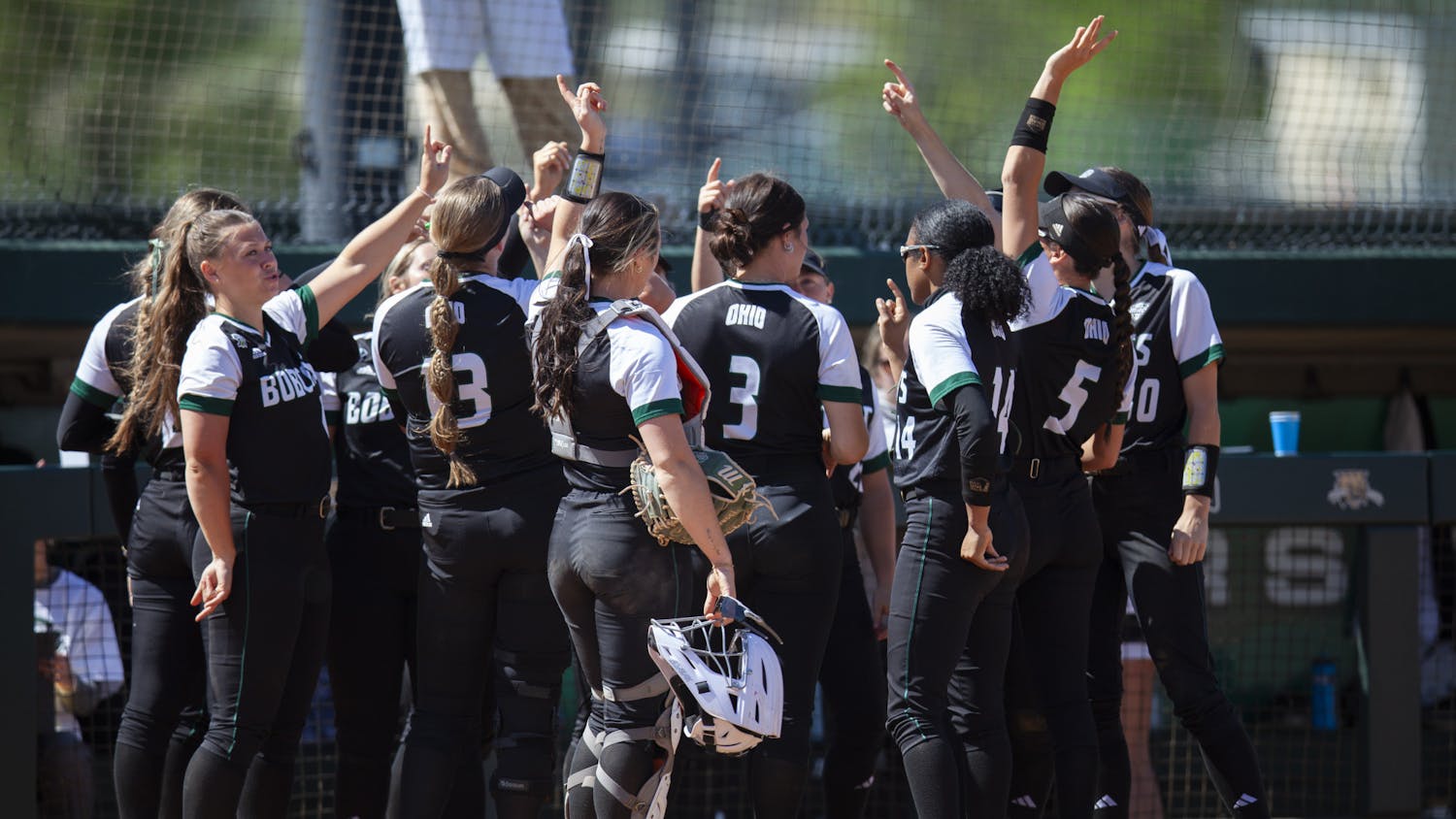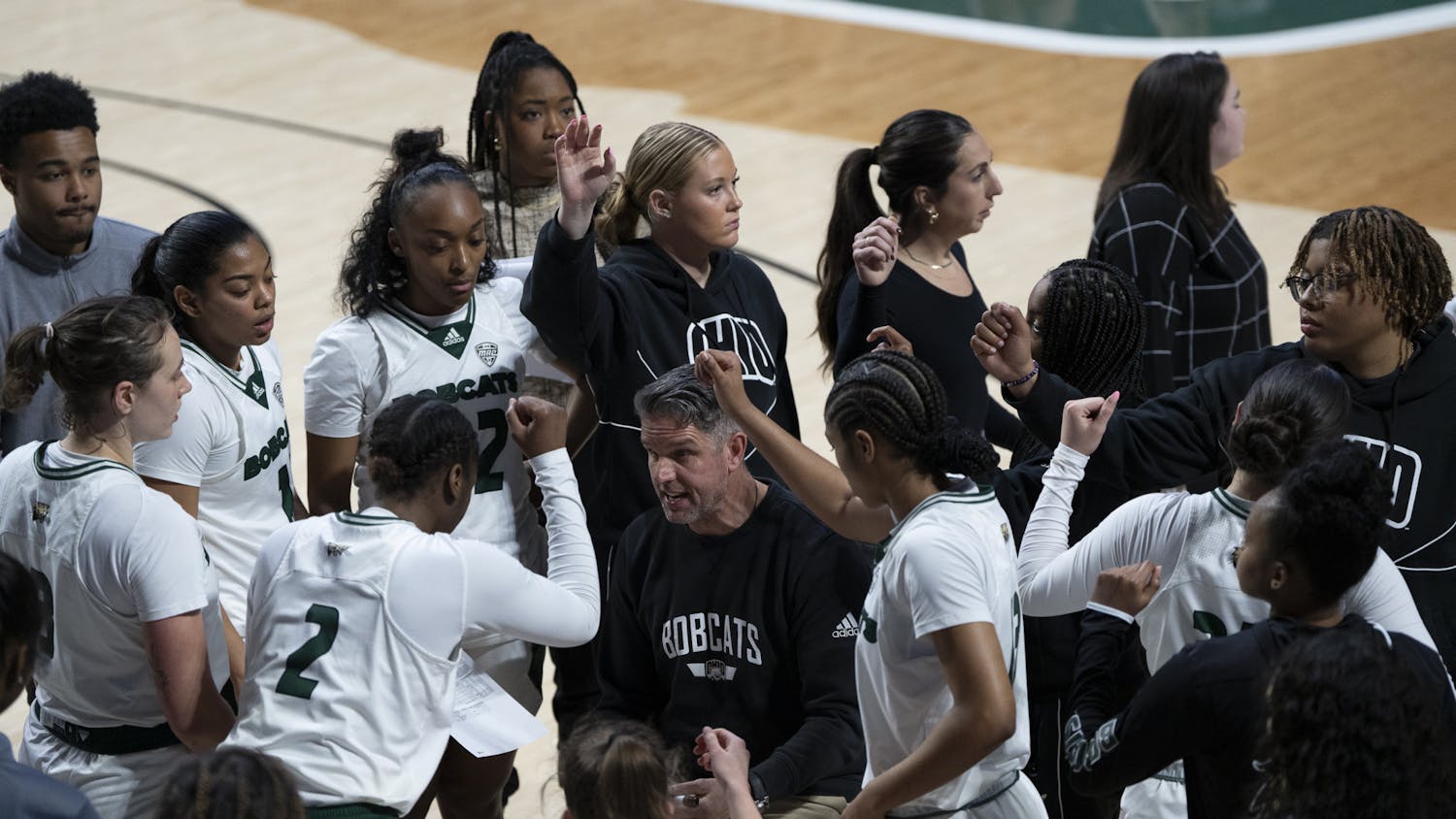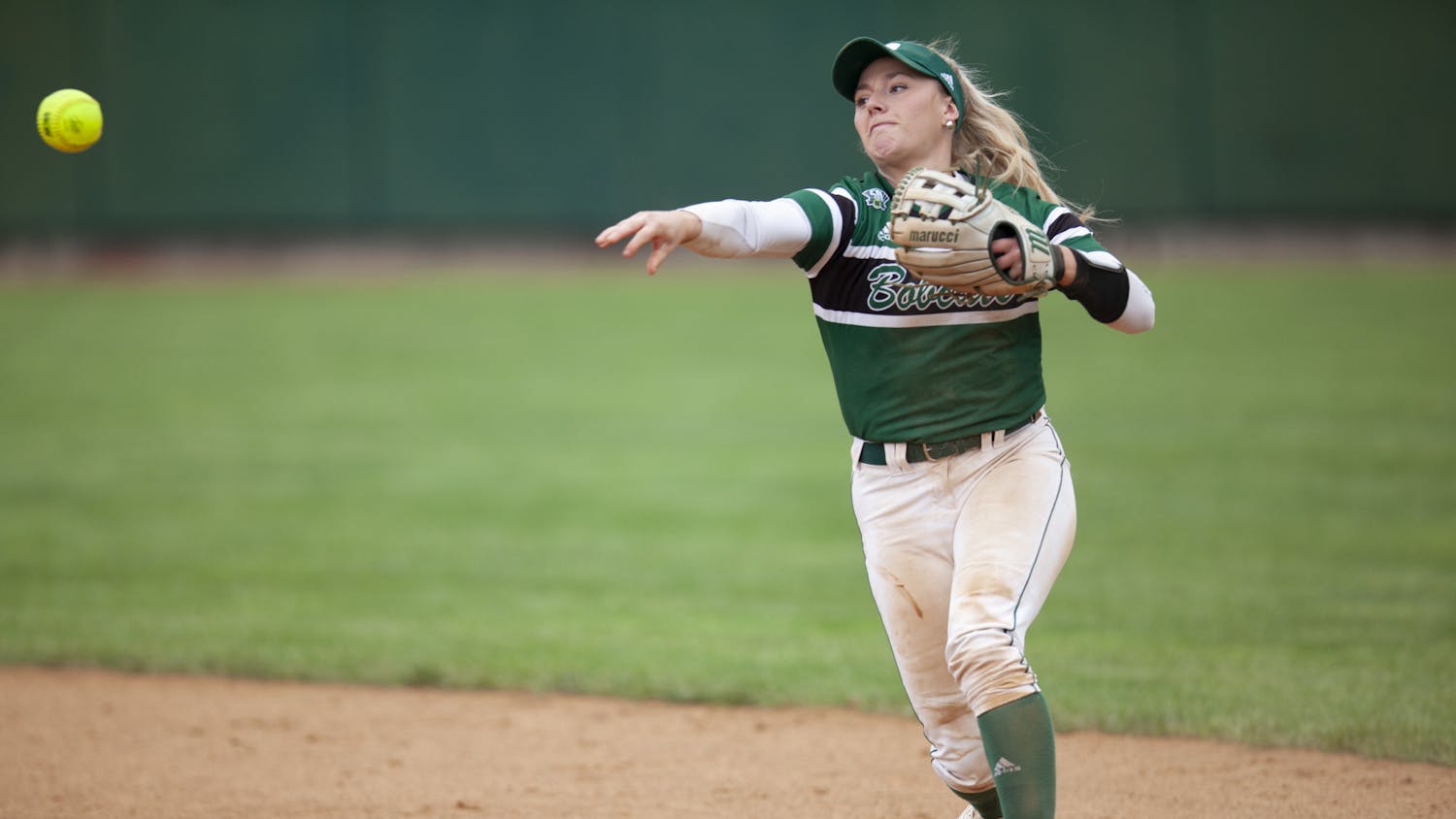In the second season of the NCAA’s stricter regulations on baseball bats, the Mid-American Conference as a whole is seeing its offensive numbers decline.
A couple of Bobcats, however, are bucking the trend and putting up numbers that wouldn’t have looked out of place a few years ago.
Ohio senior first baseman Jensen Painter is pacing the conference with 10 home runs, and his 10 doubles are second only to Kent State senior Jimmy Ryder’s 14. Painter is third in the MAC in slugging percentage, fourth in hits and fifth in runs scored.
Freshman first baseman and designated hitter Jake Madsen’s 37 hits are second-best in the MAC, while his .402 batting average is topped by only three others.
It’s not uncommon for Bobcat players to put up those kinds of numbers, but it was thought that after the NCAA enacted new rules last year designed to limit offensive production, numbers would drop significantly.
For the first time since the 1970s, NCAA student-athletes are using sub-standard technology on the diamond.
Gravitating from wooden aluminum bats three decades ago led to larger sweet spots on lighter bats.
Carbone likened the step back in technology to playing golf with real fairway woods as opposed to today’s advanced drivers. But like a golfer using his grandfather’s clubs, the transition will force collegiate athletes to get back to basics.
“You have to have better mechanics now,” Carbone said. “With the other bats, you were able to release your backside and be out front and hit with one hand and the ball would still go out of the ballpark.
“Now, it doesn’t go anywhere. You have to get back to what real baseball was.
You have to have good swing mechanics in order to drive through the ball.”
Beginning in January 2011, the NCAA placed a tougher restriction on “Bat-Ball Coefficient Restitution”, which effectively reduced a batted ball’s potential exit speed. The ruling went into effect with the intention of cutting down excessive power numbers and protecting players.
Last season, the MAC saw a significant drop in offensive production, both in power and consistency.
In 2010, Toledo led the conference with a .328 average and the Bobcats were the top of the MAC with 79 home runs. Last year, Eastern Michigan led the league with just below a .300 average, while Buffalo had a league-leading 40 dingers.
In 2012, Painter is on pace to put up at least half that many homers. Painter and Madsen said their plate approaches have not changed since the adoption of the new bats, but they have to be more mechanically sound in the batter’s box.
“With these new bats you can’t get one off the handle and still get away with a single,” Painter said. “You have to focus on that and square up more.”
Painter had the opportunity to make a smooth transition from playing wooden-bat ball with the Great Lakes Summer Collegiate League’s Southern Ohio Copperheads during the summer. But for Madsen, who made the jump from the high-school ranks where aluminum bats are still the norm, adjusting to the college game took a bit longer.
“It’s a huge adjustment for me because balls just aren’t jumping off my bat like they did in high school,” Madsen said. “Hitting home runs in high school is so easy and now you get into it and it doesn’t fly. My approach is to try to drive the ball up the middle and to the left side. It’s helped me stay on the ball.”
jr992810@ohiou.edu






